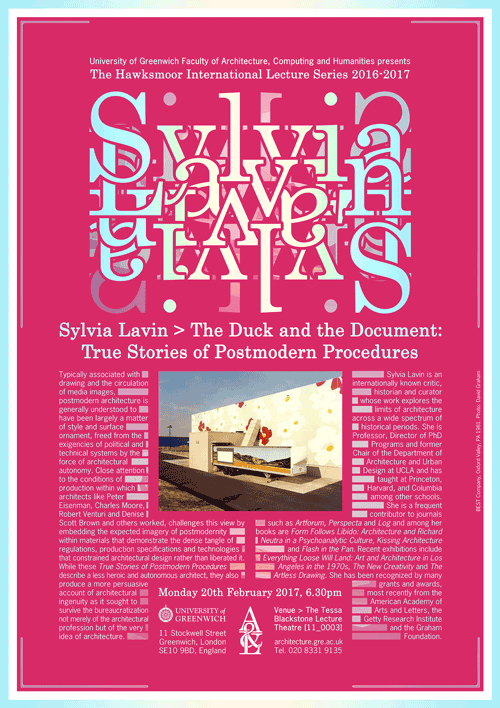- Monday 20th February 2017, 6.30pm
- Tessa Blackstone Lecture Theatre [11_0003]

Typically associated with drawing and the circulation of media images, postmodern architecture is generally understood to have been largely a matter of style and surface ornament, freed from the exigencies of political and technical systems by the force of architectural autonomy. Close attention to the conditions of production within which architects like Peter Eisenman, Charles Moore, Robert Venturi and Denise Scott Brown and others worked, challenges this view by embedding the expected imagery of postmodernity within materials that demonstrate the dense tangle of regulations, production specifications and technologies that constrained architectural design rather than liberated it. While these True Stories of Postmodern Procedures describe a less heroic and autonomous architect, they also produce a more persuasive account of architectural ingenuity as it sought to survive the bureaucratization not merely of the architectural profession but of the very idea of architecture.
Sylvia Lavin is an internationally known critic, historian and curator whose work explores the limits of architecture across a wide spectrum of historical periods. She is Professor, Director of PhD Programs and former Chair of the Department of Architecture and Urban Design at UCLA and has taught at Princeton, Harvard, and Columbia among other schools. She is a frequent contributor to journals such as Artforum, Perspecta and Log and among her books are Form Follows Libido: Architecture and Richard Neutra in a Psychoanalytic Culture, Kissing Architecture and Flash in the Pan. Recent exhibitions include Everything Loose Will Land: Art and Architecture in Los Angeles in the 1970s, The New Creativity and The Artless Drawing. She has been recognized by many grants and awards, most recently from the American Academy of Arts and Letters, the Getty Research Institute and the Graham Foundation.